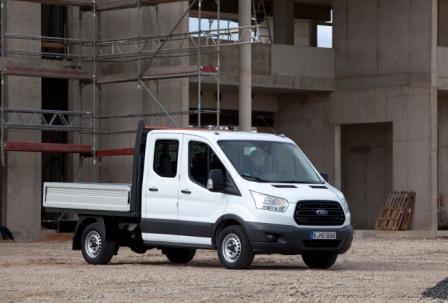
Almost every mainstream light commercial manufacturer has an off-the-shelf 3.5-tonne gross weight tipper and dropside in its catalogue or somewhere on its web site. It is not hard to see their appeal.
Buy a Ready-Bodied Tipper or Dropside
Go the off-the-shelf route and by definition the vehicle you need will be available almost immediately. That’s essential if your existing workhorse has just fallen to bits.
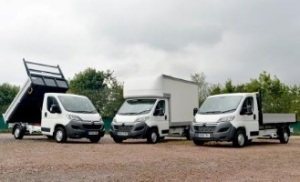
The body may be constructed by a third party body builder but its warranty will dovetail neatly with the warranty provided by the chassis maker. Because the latter will have approved the entire package and subjected the body builder’s products and production processes to exhaustive scrutiny, all the customer needs to do if there is a problem is tell the dealer to sort it out.
There is no need to get involved in a three-cornered wrangle between the dealer, the chassis manufacturer and the body builder.
Furthermore, the entire vehicle is sure to comply with the European Union’s latest Type Approval regulations. That should mean it is a quality product made using dependable components.
Bespoke Bodybuilding – More Choice – More Hassle
One drawback to the off-the-shelf approach is that the product you are offered will be a standardised one. While some extras and accessories will be available – warning beacons for the cab roof for instance – lengthening the cargo bed by 100mm because that happens to be the bed length you have always had will not be an option.
If you want to go that route then you will have to have the body specially-built and specially-approved, and that is going to be expensive. And do you really need that extra 100mm anyway?
Choose Alloy Bodies – Stay Lightweight – Stay Legal
Most 3.5-tonne tippers are constructed using a steel floor but with alloy sides and an alloy tailboard.
The use of alloy allows payload capacity to be kept at a respectable level of around 1.1 to 1.3 tonnes, especially if you opt for one of the lighter 3.5 tonne chassis. Citroen’s Relay, Peugeot’s Boxer and Fiat’s Ducato all spring to mind, and have all been recently revised.
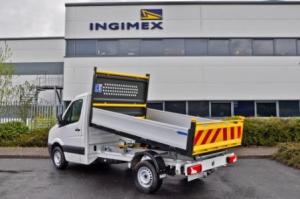
Go the all-steel route and payload capacity may drop to as little as 700kg on some chassis, especially if you opt for rear-wheel-drive and twin rather than single rear wheels (single rear wheels are perfectly adequate for most tasks). Furthermore, steel needs painting, and corrodes; and you do not want the highly-visible sides and tailboard of your vehicle pock-marked with rust.
By contrast, alloy does not need painting, and will not rot.
If maximum payload is a vital concern and you do not mind forking out a £1,000 premium over a steel-and-alloy body then there is nothing to stop you going the all-aluminium route. It may be worth considering if you are specifying a cage tipper body and a tail-lift.
The weight of the cage and tail-lift will push the payload capacity down, although in the latter’s case the platform can act as a substitute for the tailboard. Opting for an all-alloy body will allow you to win back some of the kilos you have lost.
Some operators may fear that an all-alloy cargo bed will be easily damaged in service. However that is most unlikely unless you are engaged in really arduous work: dropping big lumps of concrete rubble from a height of several storeys for example.
Do You Need a Tipper? Will a Dropside Do?
Turning to 3.5-tonne dropsides, the big drawback of course is that the body cannot be elevated.
On the positive side however that means a longer body can be specified and the absence of any tipping gear means that a more generous payload can be achieved. Think in terms of up to 1.5 tonnes depending on the model you specify, and remember that – as with tippers – front-wheel-drive always tends to be lighter than rear-wheel-drive.
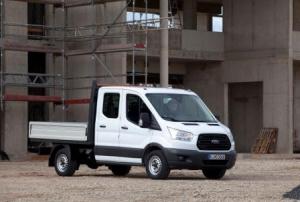
Dropsides tend to be constructed using a 15mm anti-slip birch deck, alloy sides and an alloy tailboards.
Consider Back-Saving Lifting Devices
A tail-lift can add to the versatility of both a tipper and a dropside and on a 3.5-tonner can raise up to around 500kg depending on the model you choose.
A mesh platform may be worth specifying. Lighter than a solid one, it also has the happy effect of reducing aerodynamic drag, which means better fuel consumption.
Remember to fit a protection device that stops the tail-lift being deployed if further use is likely to flatten your vehicle’s battery. The last thing you want is to be stuck in the middle of nowhere and unable to start the engine.
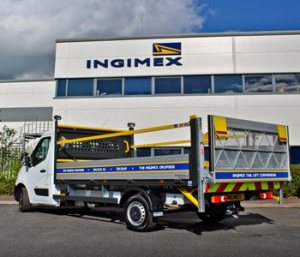
It is also worth noting that onboard cranes are not the preserve of heavy trucks. Lighter electric and hydraulic cranes are available for 3.5-tonners, with extendible booms and accessories such as clamshell buckets.
Training is of course vital if workers are being asked to use tail-lifts and cranes; and safety must be given top priority. Use even a small crane without training and extensive damage can be done to both people and property; and the fall-out for your business is likely to be grave.
If you’re considering purchasing a commercial vehicle that’s a real workhorse, why not visit TruckLocator and find a tipper or dropside to help with your project.







